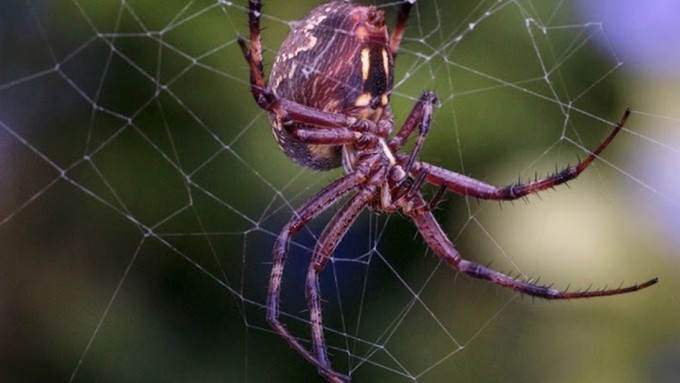
Patricia Carpenter welcomes visitors to her garden Sunday, Aug. 4

Spiders are especially evident in July gardens. This western spotted orbweaver was photographed at Patricia Carpenter's native plant garden. Courtesy Beth Savidge via Patricia Carpenter
Tour a native garden in summer? Why?
"I am sure there are some out there who think I am crazy having a summer ramble-- it's hot," says Patricia Carpenter, the CNPS Ambassador who seasonally welcomes visitors to her garden near Davis. But she has her reasons, grounded in education.
"I really think it is important to see native gardens in summer and contrast them with non-native gardens."
She adds, "The desert area is the highlight of our summer native garden!"
Carpenter's Summer Seasonal Native Garden Ramble happens Sunday, Aug. 4, from 7 a.m. to 11 a.m. Admission is free for the self-guided tour but registration is required here. Visitors may start the tour any time during those hours.
The Carpenter native garden covers an acre west of Davis along a slough, west of Pierce Ranch Road south of Russell Boulevard. Carpenter started the garden in 2005, and it now features about 400 species and cultivars of California native plants.
Highlights of high summer at the site include viewing summer blooms, seeing how plants adapt to heat and drought, observing seasonal maintenance and seed collecting, and examining irrigation strategies.
Carpenter will offer an optional short orientation and Q&A session at 8 a.m. and again at 9:30 a.m. Those interested should meet at the check-in table.
Visitors should wear sturdy shoes, and are welcome to bring lunch or a snack (and bring water). No dogs allowed. The site has a composting toilet.
To view Carpenter's California Native Plant Society Ambassador profile, as well as see a map and read more about her garden, go here. Her non-native garden also will be open to visitors that day, offering the contrast that she mentioned.
Comments
0 comments have been posted.Sacramento Digs Gardening to your inbox.
Food in My Back Yard Series
May 6: Maintain soil moisture with mulch for garden success
April 29: What's (already) wrong with my tomato plants?
April 22: Should you stock up on fertilizer? (Yes!)
April 15: Grow culinary herbs in containers
April 8: When to plant summer vegetables
April 1: Don't be fooled by these garden myths
March 25: Fertilizer tips: How to 'feed' your vegetables for healthy growth
March 18: Time to give vegetable seedlings some more space
March 11: Ways to win the fight against weeds
March 4: Potatoes from the garden
Feb. 25: Plant a fruit tree now -- for later
Feb. 18: How to squeeze more food into less space
Feb. 11: When to plant? Consider staggering your transplants
Feb. 4: Starting in seed starting
Sites We Like
Garden Checklist for week of May 11
Make the most of the lower temperatures early in the week. We’ll be back in the 80s by Thursday.
* Plant, plant, plant! It’s prime planting season in the Sacramento area. Time to set out those tomato transplants along with peppers and eggplants. Pinch off any flowers on new transplants to make them concentrate on establishing roots instead of setting premature fruit.
* Direct-seed melons, cucumbers, summer squash, corn, radishes, pumpkins and annual herbs such as basil.
* Harvest cabbage, lettuce, peas and green onions.
* In the flower garden, direct-seed sunflowers, cosmos, salvia, zinnias, marigolds, celosia and asters. (You also can transplant seedlings for many of the same flowers.)
* Plant dahlia tubers.
* Transplant petunias, marigolds and perennial flowers such as astilbe, columbine, coneflowers, coreopsis, dahlias, rudbeckia and verbena.
* Keep an eye out for slugs, snails, earwigs and aphids that want to dine on tender new growth.
* Feed summer bloomers with a balanced fertilizer.
* For continued bloom, cut off spent flowers on roses as well as other flowering plants.
* Add mulch to the garden to maintain moisture. Mulch also cuts down on weeds. But don’t let it mound around the stems or trunks of trees or shrubs. Leave about a 6-inch-to-1-foot circle to avoid crown rot or other problems.
* Remember to weed! Pull those nasties before they set seed.
* Water early in the day and keep seedlings evenly moist.